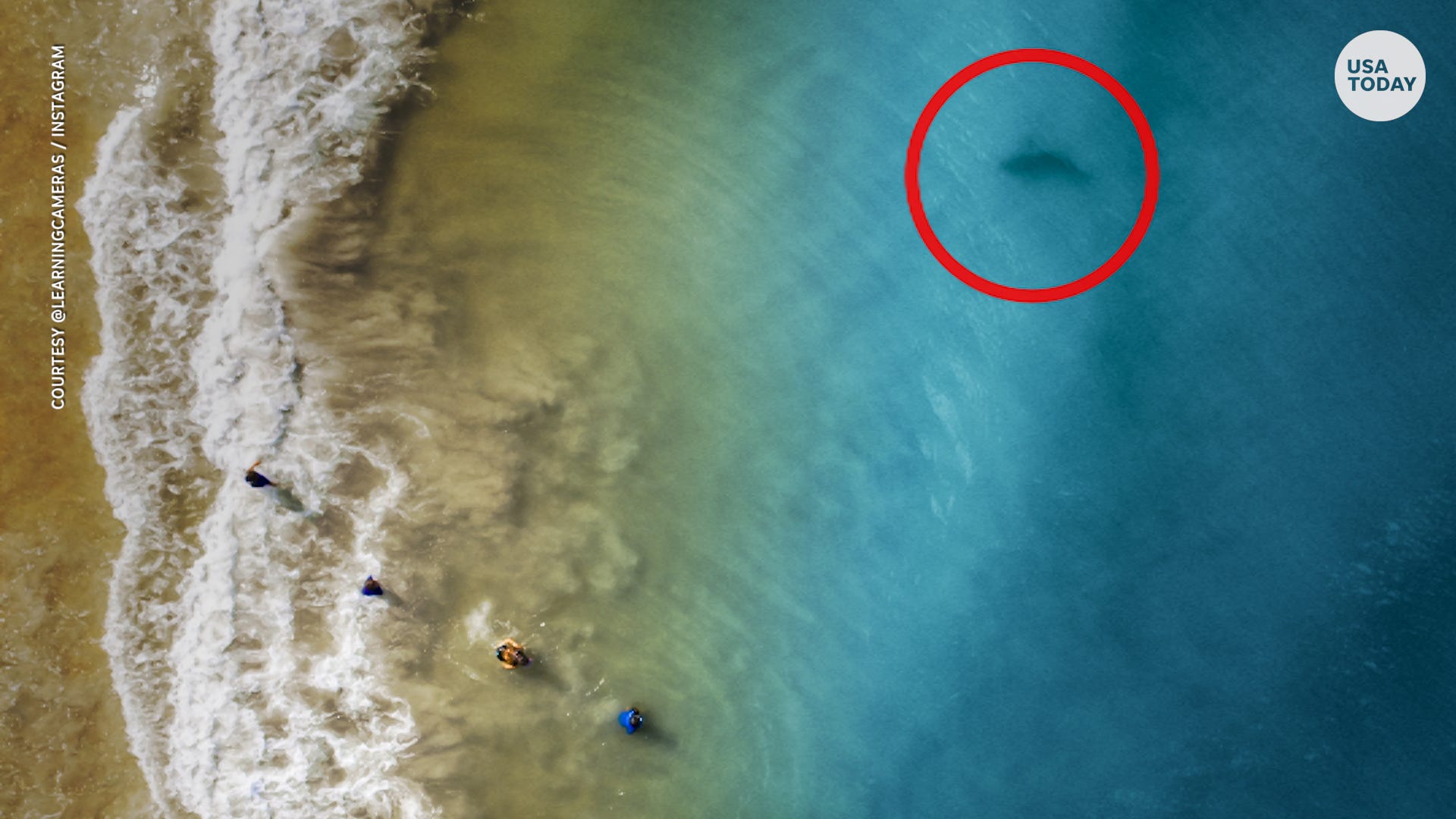
Dad’s drone captures shark swimming near his kids
Dan Watson saw a shark swimming near his children at New Smyrna Beach in Florida.
USA NOW
Probably no one knows more about Indian River Lagoon sharks and other fish in our kingdom than Grant Gilmore.
The senior scientist at Estuarine, Coastal and Ocean Science Inc., Vero Beach, has studied all kinds of finned creatures in our coastal waters for nearly half a century, including the red-in-tooth sharks that grace the our water
There is a baseline against which to measure what those sharks are doing, Gilmore said: the first serious inshore shark survey in the United States conducted in the 1970s at Melbourne Beach by Jon Dodrill for his master’s thesis at the Florida Institute of Technology ( where Gilmore earned his Ph.D.).
It’s a study that shark investigators use to this day. Since that baseline survey, Gilmore says sharks are hurting, overall, mostly because of what we’re doing on our lawns. Excess fertilizers, pesticides, septic tanks and soils flow into one of the nation’s most biologically diverse estuaries.
All that pollution fuels algae blooms and other excesses that can kill the foundations of the food chain, with sharks and other top predators in the chain also starving.
FLORIDA TODAY asked Gilmore about the lagoon’s sharks.
Here’s what he had to say:
Q: How are the sharks doing in the Indian River Lagoon? Are there enough baseline data to tell either way?
I don’t think we have a good quantitative estimate.
They are part of the whole scene. We have prey species that are disappearing (mullet, etc.) … We have a problem with toxic water. The shark has to live in the same water as the trout and everything else .. If we lose seagrass, we lose prey.
I don’t think anything good is happening to any of our fish species … People have to remember, everything is interconnected.
Q: What do you think is the greatest danger to sharks in our (Indian River Lagoon) region?
Loss of shelter, food and increased toxics in water coming from human sources within the country. These are toxins that kill both fish and seagrass.
For me the biggest risk is a risk to everything (the quality of the water entering the lagoon from all the inhabitants of the lagoon).
I’ve talked to so many people who have moved here, and they just want to kill everyone around their home.
Everything they do around their homes affects everything downstream, including sharks.
Q: Is the federal or state government doing enough to protect sharks in Florida?
If we’re talking about water quality and habitat, then ‘no.’
Federal laws protect sharks caught with hook and line. They do not protect sharks from toxic water, loss of food and habitat.
More shark expert advice: Your yard leads to the Indian River Lagoon. Do you want to preserve trout, manatees, dolphins? then…
There are all kinds of controls on landing (but what about where the snook spawns?) I think it comes down to water quality.
Q: Which shark species are you most concerned about around Brevard?
Those who come to the lagoon are the most affected, and that is the bull shark.
Anything that enters the Sebastian River will be hit by bull sharks. They are affected by any other threatening trout.
Another thing I’m really concerned about is the hammers. Hammers on a set line die instantly.

Expert shows how differences in shark teeth determine bite injuries.
Fish expert Grant Gilmore, of Vero Beach, describes the differences between shark teeth that we all hope we never see while we’re swimming and surfing.
Denise Stenn
We still have a lot of people in Florida, and a lot of people with machismo who want to hunt sharks in Florida.
When Jaws came out … we saw all kinds of craziness … A guy (in the Melbourne Beach area) broke a sharks jaw thinking it would come back.
When we have so many new people coming to Florida, the chambers of commerce should educate them.
Sharks are part of Florida, as are alligators. Don’t feed the sharks. You don’t feed the alligators, do you? If you feed these people, they will feed you and they may not be able to tell the difference between what you give them and what you give them.
Like bears and alligators and whatever. There is a time and a location, and doing something silly. I don’t want to swim at night, when the tigers come in to feed the turtles.
They are all a very important part of the ecosystem, because they are a top predator.
They have a tremendous effect on the balancing of the ecosystem.
We are the interlopers. We have to understand that we are the ones who come in and change the whole play here.
Contact Waymer at (321)261-5903 or [email protected].


